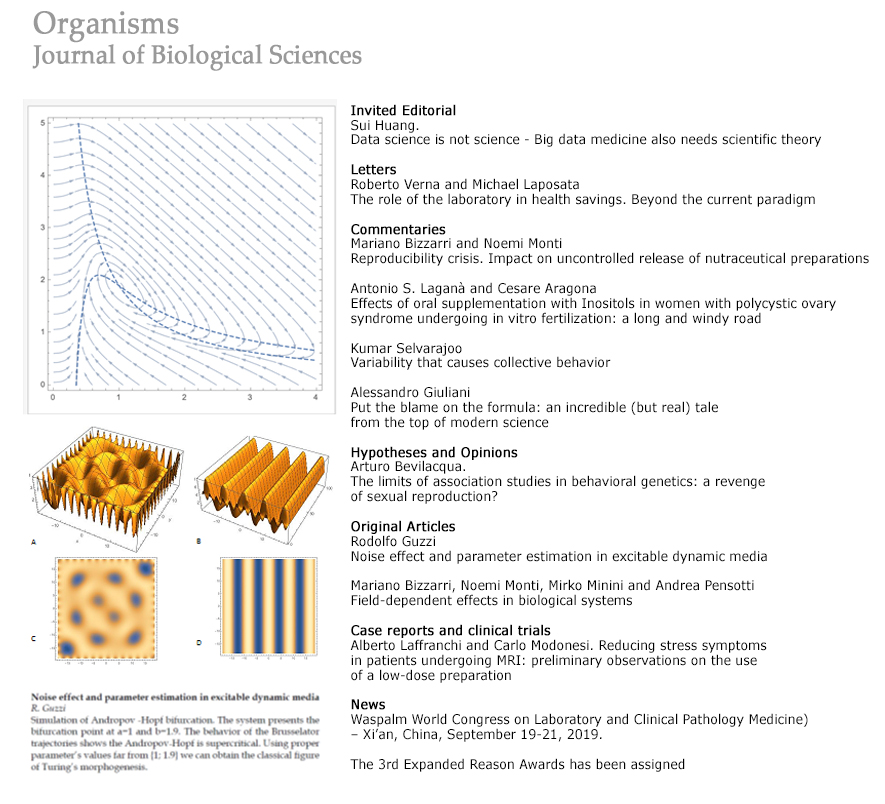Field-dependent effects in biological systems
DOI:
https://doi.org/10.13133/10.13133/2532-5876_5.8Abstract
A system’s biology perspective implies that, in investigating the logic of complex living organisms, we have to shift from single entities to their mutual correlations. The collective dynamics between cells and their tissues – embedded within a morphogenetic field - makes possible the self-movement of the system, allowing a continuous change of the organism without disrupting its fundamental unity, i.e. preserving hence its internal coherence. Interactions among molecules, usually explained according to a reductionist, ligand-receptor model, occur in a complex biological matrix and their dynamics should be described in accordance with the framework provided by Quantum Electro Dynamics (QED), in order to accommodate with a wide arrays on inexplicable facts (synergy, coherence, long-range interactions, and emergence of ordered structures). Indeed, a vast number of biological processes have already been demonstrated behaving according to Quantum Mechanics rules. Quantum effects are constitutive components of the biological field and they deserve to be carefully investigated to provide a more convincing comprehension of a number of biological phenomena. Within this field, quantum effects alongside with other neglected, weak forces, can participate in shaping critical biological transitions, promoting cooperation between a large number of molecular entities, and leading hence to the emergence of coherent processes.Downloads
Published
How to Cite
Issue
Section
License
Copyright Agreement with Authors
Before publication, after the acceptance of the manuscript, authors have to sign a Publication Agreement with Organisms. The authors retain all rights to the original work without any restrictions.
License for Published Contents

You are free to copy, distribute and transmit the work, and to adapt the work. You must attribute the work in the manner specified by the author or licensor (but not in any way that suggests that they endorse you or your use of the work).





